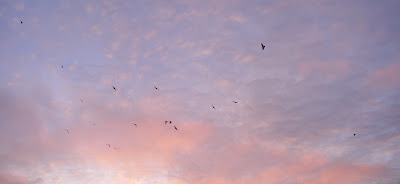Living and working in the North End, my family and I have the pleasure of hearing church bells now and then—from the Holy Ghost Church on Selkirk and the Holy Trinity Ukrainian Orthodox Metropolitan Cathedral on Main near Redwood. These bells chime in a predictable and comforting pattern amidst the more chaotic sounds of gunshots (I always hope they’re firecrackers), sirens (which we hear often), honking cars (particularly annoying between 11 and 6), and yelling (which we fortunately don’t hear too often).
With Christmas approaching and snow on the ground, I’ve been drawn to singing Christmas carols—those comforting and predictable songs that return every year as part of the Christmas tradition. When I first started singing them as a child in church, I didn’t fully grasp their deep and profound messages. As I grow older and experience more of the pain and tragedy in our world, I am gripped by the poetic expressions of carol writers and wonder about their experience of life.
I think of “Good King Wenceslas” and the story of a king and his page who witnessed a poor man gathering wood in a snowstorm and how they attempted to bring him food, wine, and logs for his fire with this message from the writer in the final verse:
“Therefore, Christian men, be sure, wealth or rank possessing, ye who now will bless the poor, shall yourselves find blessing.”
Henry Wadsworth Longfellow wrote a poem which became a carol when John Marks adapted the following words and added music:
I heard the bells on Christmas Day
Their old familiar carols play
And wild and sweet the words repeat
Of Peace On Earth, Good Will To Men
Their old familiar carols play
And wild and sweet the words repeat
Of Peace On Earth, Good Will To Men
…And in despair, I bowed my head,
“There is no peace on earth”, I said,
“For hate is strong and mocks the song
Of Peace On Earth Good Will To Men.”
“There is no peace on earth”, I said,
“For hate is strong and mocks the song
Of Peace On Earth Good Will To Men.”
Then pealed the bells more loud and deep
“God is not dead, nor doth he sleep.
The wrong shall fail, the right prevail,
With Peace On Earth Good Will To Men.”
“God is not dead, nor doth he sleep.
The wrong shall fail, the right prevail,
With Peace On Earth Good Will To Men.”
As we face the harsh realities of murder, violence, family brokenness, and addiction in our communities, may the timeless words of Longfellow breathe hope into our hearts. May we all join him by wishing peace and good will to everyone we meet.
If you’d like to hear this carol and others, please join me at Sam’s Place just across the river at 159 Henderson for “Christmas in Story and Song” on Wednesday, December 21st at 7:30.


